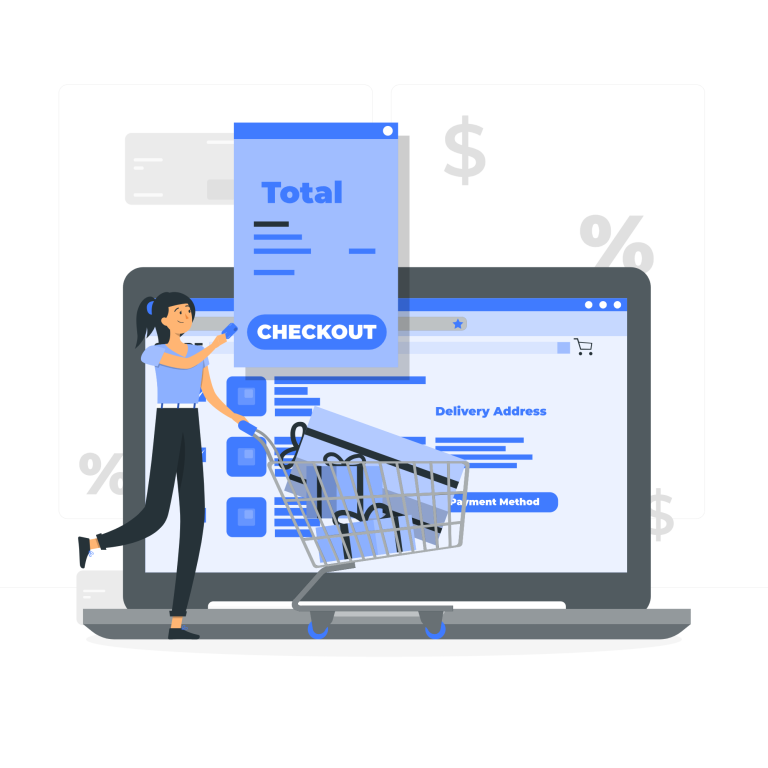Introduction:
The world of online business has witnessed exponential growth in recent years, and developing a successful e-commerce website has become a key component of any thriving enterprise. With the right approach and strategic planning, you can create an e-commerce website that attracts customers, drives sales, and sets your business up for success. In this comprehensive guide, we will outline the essential steps involved in developing a successful e-commerce website.
Define your business goals and target audience:
Before diving into the development process, it’s crucial to define your business goals and identify your target audience. Consider what products or services you will offer and determine your unique selling proposition (USP). Understanding your target audience will help you tailor your website design, user experience, and marketing efforts to cater to their specific needs and preferences.
Choose the right e-commerce platform:
Selecting the appropriate e-commerce platform is vital for the success of your online business. Consider factors such as ease of use, scalability, customization options, security features, and integration capabilities. Popular e-commerce platforms like Shopify, WooCommerce, and Magento offer robust features and extensive plugin libraries to help you build a powerful online store.
Design a user-friendly and visually appealing website:
The design of your e-commerce website plays a crucial role in attracting and retaining customers. Aim for a clean, intuitive, and user-friendly layout that showcases your products effectively. Optimize your website for mobile devices, as a significant portion of online traffic comes from smartphones and tablets. Implement high-quality product images, clear product descriptions, and intuitive navigation to enhance the user experience.
Implement a secure and reliable payment gateway:
A secure payment gateway is essential to instill trust in your customers and protect their sensitive information. Integrate a reliable payment gateway that supports popular payment methods and ensures data encryption for secure transactions. Popular payment gateways include PayPal, Stripe, and Authorize.Net. Display trust seals and security badges prominently to further reassure customers about the safety of their transactions.
Focus on search engine optimization (SEO):
Optimizing your e-commerce website for search engines is crucial for driving organic traffic and improving your online visibility. Conduct keyword research to identify relevant keywords and incorporate them into your website’s content, including product descriptions, titles, and meta tags. Create unique and compelling product descriptions to improve search engine rankings and attract potential customers. Additionally, optimize your website’s loading speed, utilize clean URLs, and generate a sitemap to enhance SEO performance.
Streamline the checkout process:
A complicated or lengthy checkout process can lead to cart abandonment, resulting in lost sales. Simplify the checkout process by implementing a one-page or guest checkout option. Offer multiple payment methods and ensure that the process is intuitive, secure, and user-friendly. Incorporate trust signals such as security badges and customer testimonials to increase confidence during the checkout process.
Implement effective marketing strategies:
Developing a successful e-commerce website requires a well-rounded marketing approach. Utilize various channels such as search engine marketing (SEM), social media marketing, email marketing, and content marketing to reach your target audience. Leverage social media platforms to engage with your customers, share valuable content, and promote your products. Implement email marketing campaigns to nurture customer relationships, offer personalized recommendations, and drive repeat purchases.
Monitor and analyze website performance:
Regularly monitor and analyze your e-commerce website’s performance to identify areas for improvement. Utilize analytics tools like Google Analytics to track metrics such as website traffic, conversion rates, average order value, and customer behavior. Gain insights into customer preferences and use the data to optimize your website, marketing campaigns, and product offerings continually.
Conclusion:
Developing a successful e-commerce website requires careful planning, attention to detail, and continuous improvement. By defining your business goals, understanding your target audience, implementing a user-friendly design, ensuring secure transactions, optimizing for search engines, streamlining the checkout process, implementing effective marketing strategies, and monitoring website performance, you can build an e-commerce website that drives sales, fosters customer loyalty, and propels your business towards success in the online marketplace. Remember, the key is to adapt and evolve based on customer feedback and industry trends to stay ahead of the competition.



